From Our Gardens
Winter Flowers, Shrubs, and Trees
Winterberry shrub (Ilex verticillate) provides food for birds in mid-fall to winter when food is scarce. Planting this native shrub provides food for 48 species of birds. It also attracts pollinators such as the native, solitary ground-nesting bee, Colletes banski, which forages exclusively on flowering plants in the Ilex (holly) genus.
Attributions: Cindy Trilling Nuss (photo) and Accessnepa.com (information)


Peaceful moment sitting under the American Beech tree, Fagus grandifolia. In the winter, it clings onto its russet-colored leaves that rustle in the slightest breeze.
Attribution: Jenny Rose Carey
Witch hazel Barmstedt Gold shines out in the winter sun. Bright yellow and scented even on a chilly day
Attribution: Jenny Rose Carey
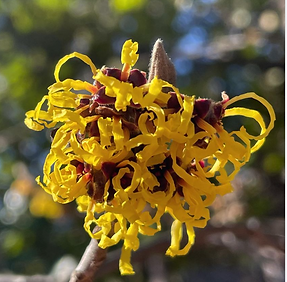
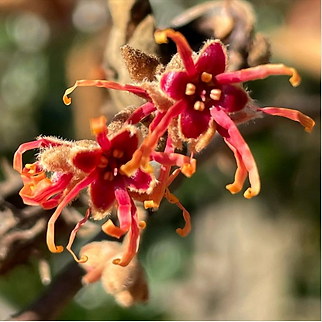
Spidery winter blooms of a species witch hazel that is native to Mississippi and only described in this century. Its blooms are red and this clone has lovely yellow tips. Still rare in the wild and in cultivation. Known as Big leaf witch hazel or Hamamelis ovalis. Blooming now - end of January in my USDA zone 6-7 garden.
Attribution: Jenny Rose Carey
Spring Flowers and Shrubs
Snowdrops and a little March snow. It is a good job that they are tough! Did you know that the dangling flowers of many winter-bloomers are perfect for shedding snow and rain. The reproductive parts of stigma and style are protected. Perfect!
While native to Europe, they are widely naturalized in North America for its ability to bring joy to gardeners in late winter or very early spring.
Attribution: Jenny Rose Carey


Early spring blooming Virginia Bluebells (Mertensia virginica), native to PA
Attribution: Cindy Trilling Nuss
Columbine (Aquilegia canadensis) is a native wildflower, grows along woodland edges and is a favorite of hummingbirds. It blooms from early spring to mid-summer.

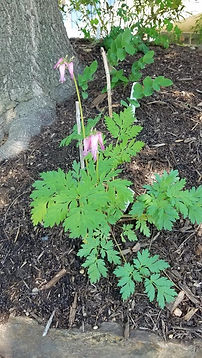
Native Bleeding Heart, Dicentra Eximia
Attribution: Cindy Trilling Nuss
Dwarf Crested Iris is a native Iris species in Pennsylvania. At a height of 4-9 inches tall, it spreads to form a groundcover in native woodlands that blooms in early spring. It grows well in rock gardens and woodland sites.

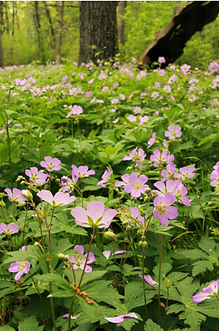
Geranium maculatum is an herbaceous perennial native to deciduous woodlands of eastern North America in zones 3 to 8. Wild geranium is the showiest of the native geraniums with larger flowers than the other species. Known by many different common names including alum root, alum bloom, cranesbill, spotted cranesbill, wild cranesbill, spotted geranium, wild geranium, wood geranium, and other local colloquial names, this clump-forming plant in the geranium family (Geraniaceae) is usually very abundant in dense patches in natural woodland openings.
Summer Flowers
Blue Wild Indigo (Baptisia australis) is a beautiful native American wildflower for early summer bloom. Deep blue spikes of pea shaped flowers.
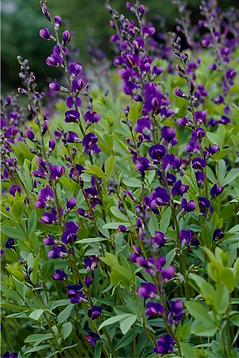

Eutrochium purpuream ("purple Joe Pye weed" or "sweet Joe Pye weed"), is a late-blooming wildflower that’s native to eastern and central North America.
Goldenrod (Solidago) is a source of mild debate in the plant world. Some view it as a type of wildflower while others only see it as an invasive weed. There are more than 100 species of this herbaceous perennial. Most goldenrod species are native to North America and as such are valuable pollinator plants.
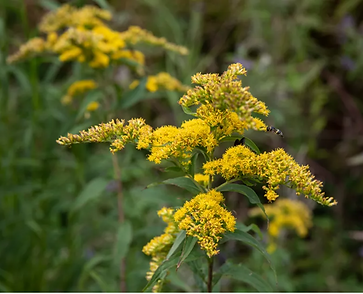
Autumn Flowers
Native Blue Asters, Symphyotrichum leave.
The last flowers of the season are so sweet - not only as a treat for us but also as a vital food source for any pollinators that are still on the wing. If your garden is looking a little lackluster consider adding what I grew up in England calling Michaelmas Daisies or asters. These East coast American natives are now classified into the crazily named genus of Symphyotrichum. Oh well - taxonomists don’t consult us gardeners before re-naming our favorite plants!!!
Attribution: Jenny RoseCarey

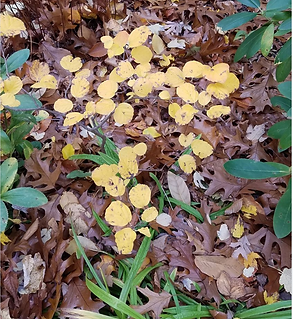
Fothergilla gardenii never lets me down in the fall. The carex looks good too.
Blooming in mid-November is SE PA.
Chrysanthemums are native to Asia and Northern Europe, and well-loved in the US.
Rain drops on Chrysanthemums. As the flowery year draws to a close and our first frost looms take look around your garden and see what still looks good. One of my highlights right now are the hardy chrysanthemums that are so reliable and floriferous. Pollinators love these single flowers. Not many on the flowers today as it is wet and chilly. I love this daisy-shaped one with pink and white rings surrounding it’s yellow button-like center. They are so easy to grow and hardy at least to Zone 5. Bonus - their aromatic foliage means that deer and rabbits do not eat them. We pinch the growing tips out a few times to reduce the stem length. Easy to share with a gardening friend by taking cuttings or digging off a piece of the plant. So much more cost effective and rewarding than annual ‘mums’. Give them a try. Best to divide them in spring to give them time to establish before flowering.
Attribution: Jenny Rose Carey
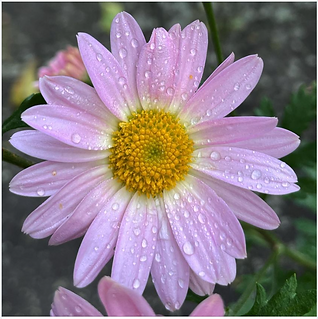

American Holly, ilex opaca
November 29, 2021 - Migrating robins are stopping by my yard for the holly!
Attribution: Zeta Cross
Honeysuckle berries are semi-translucent in the low angled light. I leave them on the vine for the birds to eat. This is a vine called Lonicera sempervirens. The earlier tubular flowers are a hummingbird favorite. I often see them buzzing from flower to flowers early in the morning and at dusk. If I am working close by, they might come up and whizz by your ear. As if to investigate you. Such cool birds.
Attribution: Jenny Rose Carey
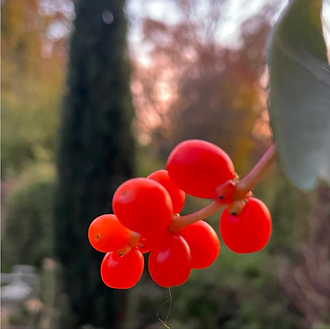

Nothing like fall asters & golden rod
Attribution: Jean Brady
Do Not Plant!
Tick-borne diseases are a serious problem in Pennsylvania for people and our pets. Prevention is key to stopping the spread. Several bushes help to create an environment where ticks are more abundant.
Supporting the Woman’s National Farm and Garden’s value of educating the public, we want to share information on 3 bushes that should not be planted in, and/or removed from, our environments.
“Gasp, remove these beauties?”, you say? To help you make your environment safer for you, your families, and pets, some nice alternatives are shared below.
What you need to know about tick-borne virus gaining prevalence in PA
- Transmission time is 15 minutes with a high infection rate.
FREE Tick Testing for PA Residents | PA Tick Research Lab (ticklab.org)
This will test your tick for several tick diseases.
- Order your free test on this website.

An example of a tick removal tool
$5.99 on Amazon
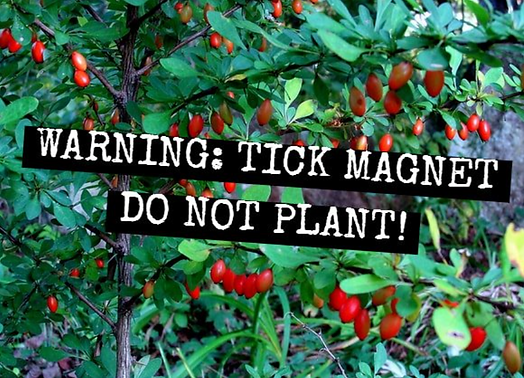
Japanese Barberry – why you ask, read the article below…
Pennsylvania will fully ban sale of Japanese barberry by fall 2023 | TribLIVE.com
Alternatives: 10 Alternatives to Japanese Barberry | Phipps Conservatory and Botanical Gardens | Pittsburgh PA